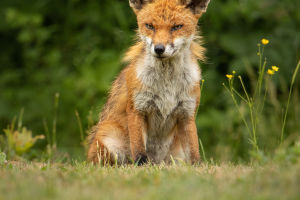Rabbits are adorable creatures that have captured the hearts of many. They are commonly kept as pets or used in laboratory research, but they are also important members of their natural ecosystem.
Understanding more about rabbits can help us appreciate and respect these creatures and their role in the world.
Rabbits are a family of small mammals that are found in grasslands and forests in their natural environment. However, they have been widely introduced to many countries and regions by humans. They typically grow to be 30 to 50 cm in length and weigh between 2 to 4 kg.
The most notable feature of rabbits is their ears, which can rotate up to 270 degrees and are very sensitive, allowing them to hear sounds from up to 3 kilometers away. Additionally, their large ears help them dissipate heat in hot climates.
Rabbits are mainly active during dusk and night, and they hide in caves or grass during the day. They primarily eat grass, leaves, and bark, but they also consume some fruits and seeds. One fascinating aspect of rabbits is their breeding speed.
A single rabbit can produce up to 12 to 13 cubs in a year, and each litter usually contains 4 to 6 babies. Although the young rabbits are born small, their hair grows quickly, and they mainly feed on breast milk for the first few weeks of their lives.
Despite their cute appearance, rabbits are timid animals that can be easily frightened by sudden sounds or unfamiliar animals. When threatened, they can quickly run away with their developed hind limbs and strong back muscles.
However, their ears are quite fragile and cannot support the weight of the animal. As such, it is essential to handle rabbits with care, especially when picking them up.
Rabbits have unique eyes that are located on both sides of their face. This placement gives them a wide field of vision, allowing them to see things around them. However, they cannot distinguish between three-dimensional objects, making it difficult for them to judge distance.
The color of a rabbit's eyes is related to its fur color. For example, the eyes of a black rabbit appear black under the light, while the eyes of a gray rabbit appear gray. Interestingly, the eyes of a white rabbit appear red because the capillaries in their eyes reflect external light.
Beyond their role in the natural ecosystem, rabbits also play an important role in medical research and laboratory experiments.
Their physiological structure is similar to that of humans, making them ideal subjects for experiments related to disease treatment and new drug development. In addition to their use in research, rabbits are also popular as pets. They are docile and friendly, making them great companions for families.
However, owning a rabbit comes with a responsibility to provide appropriate care and protection. This includes providing them with adequate food, water, and living space, as well as regular veterinary check-ups. As with any pet, it is essential to ensure that they are treated with respect and kindness.
Rabbits are more than just cute pets. They play an essential role in the natural ecosystem and are valuable subjects for medical research. Understanding and appreciating these creatures can help us create a more harmonious and sustainable environment for all living beings.
Let us continue to respect and protect the rabbits in our world.


